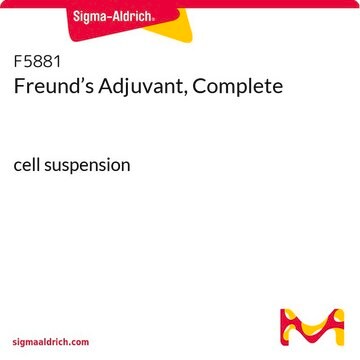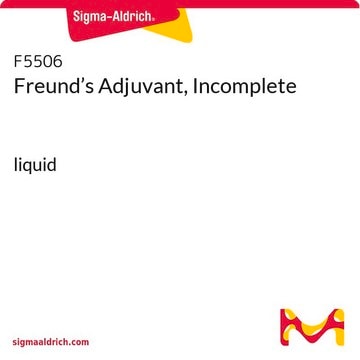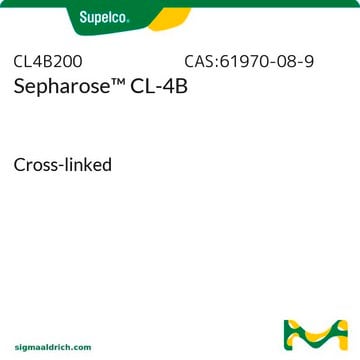Transportation information can be found in Section 14 of the product's (M)SDS.To access the shipping information for this material, use the link on the product detail page for the product.
推薦產品
形狀
lyophilized powder
技術
affinity chromatography: suitable
基質
Sepharose 4B
基質活性組
cyanate or related structures
基質墊片
1 atom (when ligands are coupled via isourea derivative or related linkage)
膨潤
1 g swells to 4-5 mL
粒徑
45—165 μm
儲存溫度
2-8°C
尋找類似的產品? 前往 產品比較指南
一般說明
C19142-15G′s最新货号 GE17-0430-01
應用
- 基于免疫亲和性的分离程序从血清中纯化凝聚素
- 从内脏利什曼病患者尿液亲和色谱法分离杜氏利什曼虫蛋白抗原
- 亲和色谱法分离人血清中的触珠蛋白
外觀
法律資訊
儲存類別代碼
11 - Combustible Solids
水污染物質分類(WGK)
WGK 3
閃點(°F)
Not applicable
閃點(°C)
Not applicable
個人防護裝備
Eyeshields, Gloves, type N95 (US)
從最近期的版本中選擇一個:
分析證明 (COA)
客戶也查看了
-
What is the Department of Transportation shipping information for this product?
1 answer-
Helpful?
-
-
After I've washed and prepared the resin in Product C9142, Cyanogen bromide-activated-Sepharose®, for the coupling reaction, how long can I wait before coupling the ligand to the resin?
1 answer-
We would recommend coupling the ligand immediately after washing and preparing the resin. This is because the reactive groups hydrolyze in the basic solution conditions of the preparation steps. The solutions used in the coupling reaction should also be kept cold (2-8°C) during the procedure.
Helpful?
-
-
Should I use a desiccator environment for storage of Cyanogen bromide-activated-Sepharose®?
1 answer-
It is a good idea to store the CNBr-activated agarose products in as dry an environment as possible, because the reactive groups are very moisture-sensitive.
Helpful?
-
-
How are proteins attached to the Cyanogen bromide-activated Sepharose® in Product C9142?
1 answer-
Coupling of molecules to CNBr-activated Sepharose® is usually via amine groups. In the case of proteins, this usually means the epsilon amines (exocyclic amines) of lysine groups.
Helpful?
-
-
What kind of volume should I use for my ligand to couple to the Cyanogen bromide-activated Sepharose®, Product C9142?
1 answer-
It is best that the coupling ligand should not be in too dilute a solution. In general, a volume ratio of 0.5 to 1 of coupling solution to CNBr-activated Sepharose® is recommended.
Helpful?
-
-
When using Product C9142, Cyanogen bromide-activated-Sepharose®, is there a particular storage buffer that I should use after I've coupled my ligand to the resin?
1 answer-
This depends on the particular situation, and the answer depends more on the coupled ligand than the resin itself. The most important criterion is to choose a buffer that is not harmful to the ligand. It is common to include 20% ethanol or preservatives like sodium azide or thimerosal (~0.02%) to inhibit potential bacterial growth.
Helpful?
-
-
My ligand is in Tris buffer. Can I use Product C9142, Cyanogen bromide-activated-Sepharose®, with this sample?
1 answer-
Because Tris is an amine-containing buffer, we do not recommend coupling of samples in Tris buffer to the CNBr-activated Sepharose®. Tris will react with the CNBr groups and remove sites for ligand coupling. We would not recommend use of any amine-containing buffer in the coupling reaction. However, after the ligand has been added in the coupling reaction, then it is OK to use amine-containing buffers to block the remaining sites (e.g. ethanolamine, glycine).
Helpful?
-
Active Filters
我們的科學家團隊在所有研究領域都有豐富的經驗,包括生命科學、材料科學、化學合成、色譜、分析等.
聯絡技術服務














